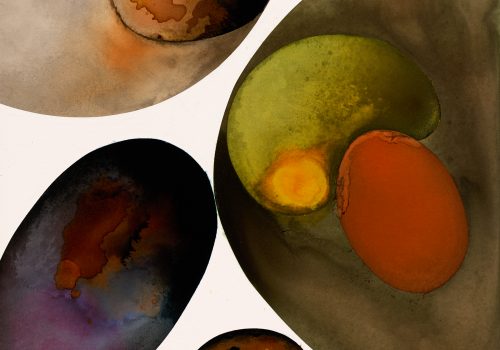The oblong forms in Collision crowd the picture plane, cut off at the edges like a full bleed image. As the edges approach one another or just begin to touch, the negative space between the forms is animated with a sense of slow, unavoidable, magnetic movement. This framing makes the forms appear massive and monumental, whether they are planets about to collide or cells with nuclei examined in close-up under a microscope. In his paintings, Penn was repeatedly drawn to scientific themes and extremes of scale, from the infinitesimal to the astronomical.
The cosmos had interested Penn since the 1930s, as evidenced by his earliest surviving series of drawings, which he revisited and published as a book in 1999 titled The Astronomers Plan a Voyage to Earth. Several of his later paintings explore imagery related to outer space. Other works feature imaginative takes on microscopic cellular forms and organisms, with references to Leeuwenhoek and Spallanzani, 16th- and 17th-century scientists who studied microscopic life forms.
Penn made Collision in 2006, at a time when his photographic activities slowed down and he devoted greater energy to painting. During this productive period, he made mostly freehand works, without printed matrices. He enjoyed the slow quiet of the work, which was like meditation and opened an area of freedom and solitude that was very different from the collaborative nature of photographic work in the studio.
Alexandra Dennett
















